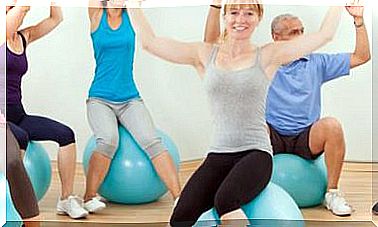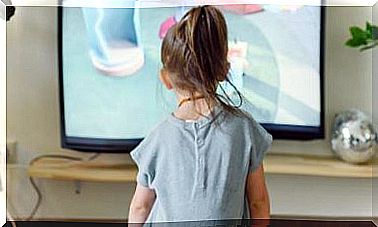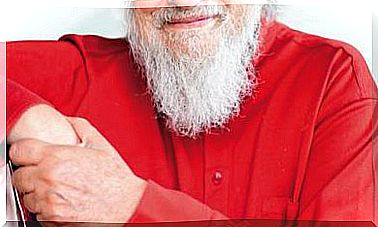Positive Thoughts: 4 Keys To Attract Them To Your Life
Good vibes are contagious. We explain how to enhance them with four psychological keys.

Personal balance depends on the ability to harmonize what we think, what we feel and what we do. Reaching this state of harmony will be easier if we initiate the changes from the body, with practices such as exercise, listening to music or laughing, which release neurotransmitters of happiness in us and favor a positive mental state.
Keys to attracting the “good vibes”
Apart from healthy habits, such as a healthy and balanced diet that provides the necessary nutrients for the correct functioning of our system, a restful sleep and having our correct body position, our breathing and the ability to salivate trained, it is essential to have other resources that can easily activate the system and quickly and directly influence the realm of sentiment.
1. Physical exercise
Exercise is one of these “quick tools . ” Exercise produces effects on the body and mind that are directly and indirectly conducive to positive thinking. When exercising:
- We carry out coordination movements in which both cerebral hemispheres participate.
- We enhance our working memory.
- We perform a muscle toning and stretching that transmits healthy information to our brain
- We facilitate cardiocirculatory stimulation that favors better tissue perfusion and a better oxygen supply.
When we exercise, we release positive neurotransmitters (endorphins, dopamine …) and decrease the effects of neurotransmitters such as cortisol, substance P and glutamate.
2. Positive visualization
Another important tool is the practice of positive visualization, whether it is visualizing pleasant memories or creative visualization (projection, imaginary, energetic, or anchoring).
Through positive visualization, we live a present that favors healthy chemistry, stimulates positive thinking circuits, and boosts our immune system, in addition to favoring the ability of these circuits for the future.
3. Laughter
We have a hard time smiling and laughing when we need it most! Laughter has a surprising therapeutic effect.
Neuroimaging studies have shown that when we laugh, certain structures of our limbic (emotional) system are activated, certain parameters related to stress decrease and we secrete endorphins that enhance our immune system both cellular and humoral.
If smiling and laughing are the consequence of a state of mental well-being, when we smile or laugh (an action of the body), we give information to the brain, which reacts chemically, facilitating well-being.
4. Music
And if laughter is important, music is too. Music affects us without asking our permission.
It produces a modification of our internal rhythmic patterns associated with an emotional experience.
We must perceive it satisfactorily for the neurobiological effect to be healthy.
If I want to favor my positive thinking and I verify that my feeling is positive when I listen to a specific style at a precise moment, my mental and physical state will improve in a few minutes.
How We Create Positive Thoughts
Staring blankly and fascinated by the scene he is contemplating, Marc prepares to grab his gear and enter the water. The breeze and the sun caress his face and he is able to feel the taste of the sea on his lips before his feet come into contact with the foam that gently melts with the sand.
It feels light and, at the same time, strong and energetic to catch the first waves. They are all for him. He was the first to reach the beach this morning. They enter staggered, perfect and with enough height to enjoy them. Rowing with harmony, he advances to the point where the wave is born.
He waits sitting on his board and, tuning into the sea, he knows that the right moment has come to start, paddling again with all his might, and join the wave. He glides on it, lets himself be embraced by the water and, as he goes, his pleasurable sensations intensify.
Two consecutive activation states are reflected in this scene:
A state of “moderate activation” of physiological stress, to which is added a “sustained activation” of the nuclei involved in the reward system, which Marc perceives as a state of well-being that is increasingly intense and that can reach a emotional climax when he feels embraced by the water and joins in that dance on his board.
The structures, systems and neurotransmitters involved in the initial moderate activation –physiological or eustress– of Marc are identical whether he later enters a pleasant state or progresses towards a sustained stressful activation or distress.
The basic difference between distress and the rewarding experience occurs when conscious or unconscious positive thoughts are generated that give way to the activation of the reward nuclei.
- Marc is already immersed in a pleasant state when he is about to enter the water and is receiving unconscious and conscious stimuli that activate his amygdala (emotional structure) in milliseconds.
- The amygdala gives immediate information to the hypothalamus (structure that will initiate the activation of the body), preparing the internal organs to act and allowing their movements.
- In turn, the amygdala passes information to the prefrontal cortex, its “virtual simulator”, a structure that thinks, foresees, plans, decides and generates the feeling of happiness that Marc experiences when he integrates the emotion perceived from the body and the positive thoughts that it generates in your prefrontal cortex.
This state is also fueled by neurotransmitters released in the reward nuclei, which regulate the intensity of pleasure.
The reward system of our brain
Some of the main reward centers are:
- The nuclei of the raphe, which produce serotonin.
- The ventral tegmental area and the substantia nigra, which produce dopamine.
- The nucleus accumbens, which mediates the release of dopamine and plays an important role in reward, laughter, pleasure, addiction, and music-induced emotions.
- Without forgetting the limbic system, the pituitary and the hypothalamus, producers of endorphins and enkephalins, also involved in the function of reducing pain (because they are part of the endogenous opioid system) and that are capable of exerting an analgesic action one hundred times greater than morphine.
- And the pituitary will also secrete oxytocin, the hormone responsible for facilitating and strengthening interpersonal attachment relationships.
The hormones of happiness
The effects that are produced in the body and mind by this maintained state of positive activation are perceived as a state of continuous well-being by our protagonist.
It generates moderate amounts of adrenaline, norepinephrine and cortisol, which keep your body activated.
And a continuous chemical shower of neurotransmitters of happiness such as oxytocin, endorphins, dopamine and serotonin, which maintain the state of well-being and improve attention, memory and learning in the short, medium and long term.
Endorphins –in addition to exerting an analgesic action– favor the immune system, decrease SP (pro-inflammatory) and glutamate in cells (the neuron killer par excellence) and stimulate the release of dopamine (neurotransmitter of motivation).
Positive in 3 steps
Each experience has three areas that make it up: thinking, feeling and acting.
A positive thought generates a positive feeling and, consequently, a positive behavior.
In turn, positive feelings facilitate positive thoughts and behaviors, and healthy actions generate healthy thoughts and feelings.
The three areas of experience can be influenced bi-directionally and, if we insist on stimulating these healthy influences, we are helping to automate healthy habits of thought, feeling and behavior.
Our body and our mind are one and, to progress in that healthy transformation and create habits, we must start where it is easiest for us.
Remember that our body is holistic, that taking care of our body is taking care of our mind and that a healthy mind favors a healthy body.
Therefore, it will be easier for us to produce mental and emotional changes if we initially “act” on the body. In this way, brain information is generated that is translated, in a matter of seconds, into that favorable “chemical shower”.
Neurotransmitters of happiness that will immediately modify our feelings and facilitate a predisposition to make other changes that are more difficult to apply.









